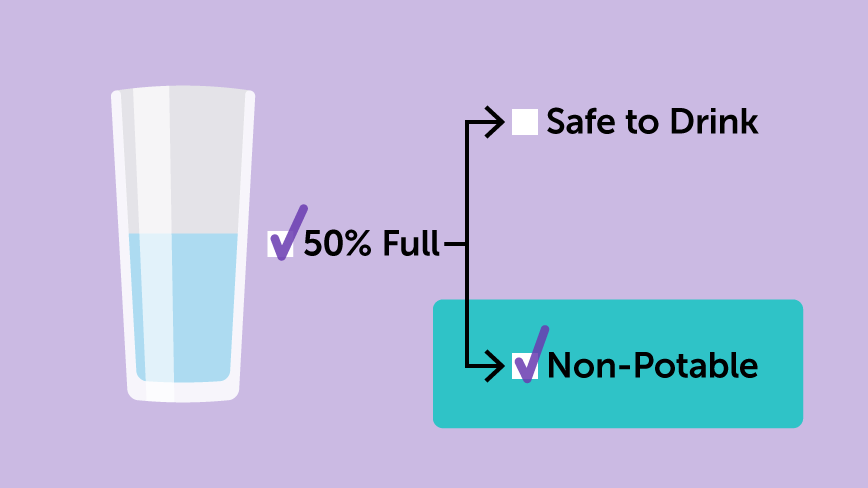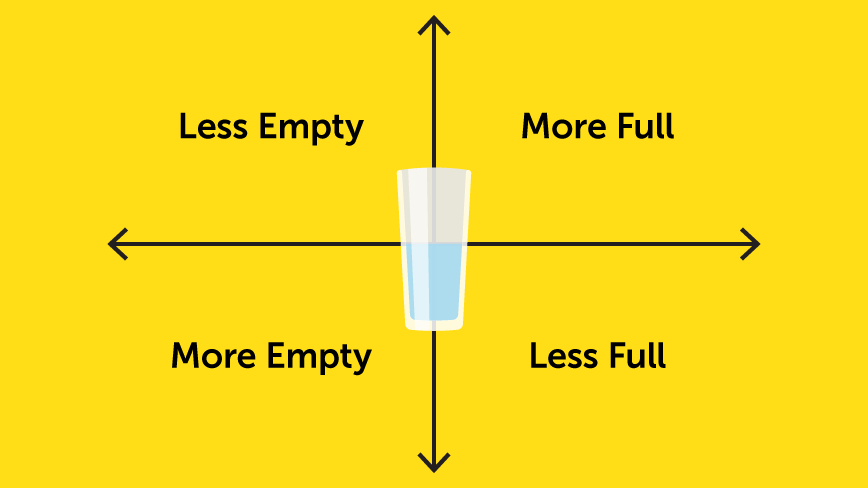Examining the relationship between vertical metrics in detail yields insights to marketers who aim to provide specialized service to the brands they serve.
The way different industries measure success can vary wildly. A bad week for one vertical market could be stellar for another. For example, a hurricane is often devastating for a retail chain, but can boost profit for a shingle manufacturer as people rebuild.
By comparing and contrasting the differing metrics verticals use, we can find overlaps as well as unique key performance indicators (KPIs). Examining these factors in detail yields insights for marketers who aim to provide specialized service to their verticals.
The Relationship Between KPIs and Goal-Setting

Marketers must be careful not to examine KPIs as goals unto themselves. They are keys to indicating performance but do not always translate to the desired performance goal itself. Any good analysis involves examining the correlation between an overarching goal and the KPI used to examine it.
For instance, an e-commerce site may want a higher rate of sales conversions. Instead of measuring conversions in isolation, they should look at how other factors such as targeted demographic leads coming from search. If no leads are coming in from the target, this could be a reason that conversions are low. They can look for a correlation between the two and test ways to boost one through the other.
This example shows how each metric or KPI is practically useless in isolation, but rather represents one slice of a larger business ecosystem. With that caveat in mind, here are some of the most interesting vertical metrics to explore:
Sales Volume
Who Uses It Most: Everyone, especially product-based verticals.

Sales volume matters to everyone. Industries that deal in product units like consumer packaged goods, retail and auto have the highest stakes in sales volume. One sale generally does not make money for an extended period of time, unlike a bank that signs someone up for a credit card account. These industries also have inventory to manage, meaning low sales volume leads to higher overhead costs for things like storage.
Example metric relationship: High overall sales volume for an auto manufacturer but low sales in one vehicle segment can mean more marketing is needed to reach profit goals.
Market Share
Who Uses It Most: auto, insurance, finance
Verticals with a small number of intense competitors must keep a close eye on how they stack up against the other options in their fields. In industries that sell nearly identical products like auto financing, this metric matters even more since the barriers to switching to a competitor are lower.
Many large, conglomerated industries also focus on gaining market share since they have a foothold in many niche segments. Similarly, local chains with few competitors will eye this metric closely.
Example Metric Relationship: A shrinking sales growth rate but an increase in market share can signal that a company is still doing relatively well.
Advertising Return on Investment (ROI)
Who Uses It Most: Everyone

Aside from long-term goals like growing product awareness, the success of every advertising or marketing effort will be measured by its ROI. Chief marketing officers can point to increases in social shares, but if these gains are costing a brand more than they are earning, then something needs to change.
Example metric relationship: Paid display ads on social channels can cause engagement to skyrocket, but a decreased ROI means the program needs refining to be worthwhile.
Sales Conversions
Who Uses It Most: Almost everyone

Ideal sales conversion rates are extremely variable depending on the vertical. Some have long sales funnels with high revenue potential at the end such as a business-to-business SaaS provider. Brands in this vertical can often chase a minuscule lead-to-sale conversion rate of 2% or lower.
In the middle are verticals like auto and banking, where a longer sales process means a large payoff. On the bottom end are verticals like retail, where sales conversions depend less on absolute customer conversions and more on conversion volume per customer.
Example Metric Relationship: A brand notices that their new program creates a lower cost per lead despite its high implementation budget because of a more consistent conversion rate.
Engagement Rate
Who Uses It Most: Everyone, especially verticals that rely on loyalty

Branding is everything for most industries that frequently rely on social or digital display engagement to sustain brand interactions that improve awareness.
Engagement is especially important for verticals with similar products since a high rate often translates to the loyalty that drives sales.
Example Metric Relationship: A Nike athletic wear campaign with high engagement can help earn better market share over less expensive brands like Russell Athletic as a result of successful mindshare.
Unique Metrics per Vertical
Now that we have explored the commonalities that apply across several verticals, exploring the metrics that apply almost exclusively to one vertical can be a worthwhile exercise. Each vertical industry segment has their own set of KPIs that they eye closely to determine the health of their business and their brand.
Retail
Retail is one of the few industries where customers are expected to purchase more than a few products at a time. Bigger baskets mean more consistent revenue and can help shape other factors like optimal store layout to encourage buying. This characteristic leads to an emphasis on sales list coming from increasing customer basket size and not just sheer customer volume or cross-selling.
Another unique metric for retail is the drift from in-store to online sales. As more retail brands invest in “bricks and clicks” models, they want to ensure that their budgets are going to programs people actually use. Finally, retail depends on bringing in new customers in order to continually grow sales.
Some of Retail’s Unique Vertical Metrics:
- Basket size
- Offline to online sales
- Unique visitors for reach
Healthcare
Healthcare depends as much on awareness of health-related issues as it does upon trying to convince people to purchase services from their specific brand. The more people are aware of health issues like high blood pressure and the dangers of repetitive stress, the more likely they are to follow up on symptoms or engage in preventative healthcare.
Population factors can affect healthcare, as well. For instance, states with low participation on the ACA insurance exchange can mean fewer guaranteed reimbursements for treating emergency department patients.
Some of Healthcare’s Unique Vertical Metrics:
- Percentage of insured population in market
- Employer
- Individual
- Uninsured
- Percentage of adults using health devices/apps
- Percentage of successful insurance/Medicare reimbursements
Auto
The auto industry leans more heavily on reputation than nearly any other vertical. Cars have become pretty similar across the board in recent years in terms of by-the-numbers capabilities, so auto brands must distinguish themselves through concerted efforts to tie buying decisions to emotion. Volkswagen has crafted a reputation for including beneficial technology along with solid quality. Many Korean auto makers by contrast have a reputation for being affordable but having lower quality, something they are trying to shed by taking design cues from luxury European brands.
A solid brand opinion in this way can directly influence how effective brands and dealerships are at boosting other metrics, like engagement with their digital video campaigns or foot traffic to dealerships to test out a new vehicle redesign. Industry awards only contribute to this prestige.
Some of Auto’s Unique Metrics:
- Brand opinion
- Dealer foot traffic
- Call-to-action conversion
- “Soft” metrics
- Awards
- Recognition
Conclusion
Metrics weave a tangled web with many interconnected elements. Looking for relationships between these metrics can help you differentiate common strategies across verticals as well as the unique approaches demanded for that particular industry. This analysis in turn can help you create more accurate benchmarks, or it could help you adopt strategies from other verticals that may be relevant to your specific metric.

